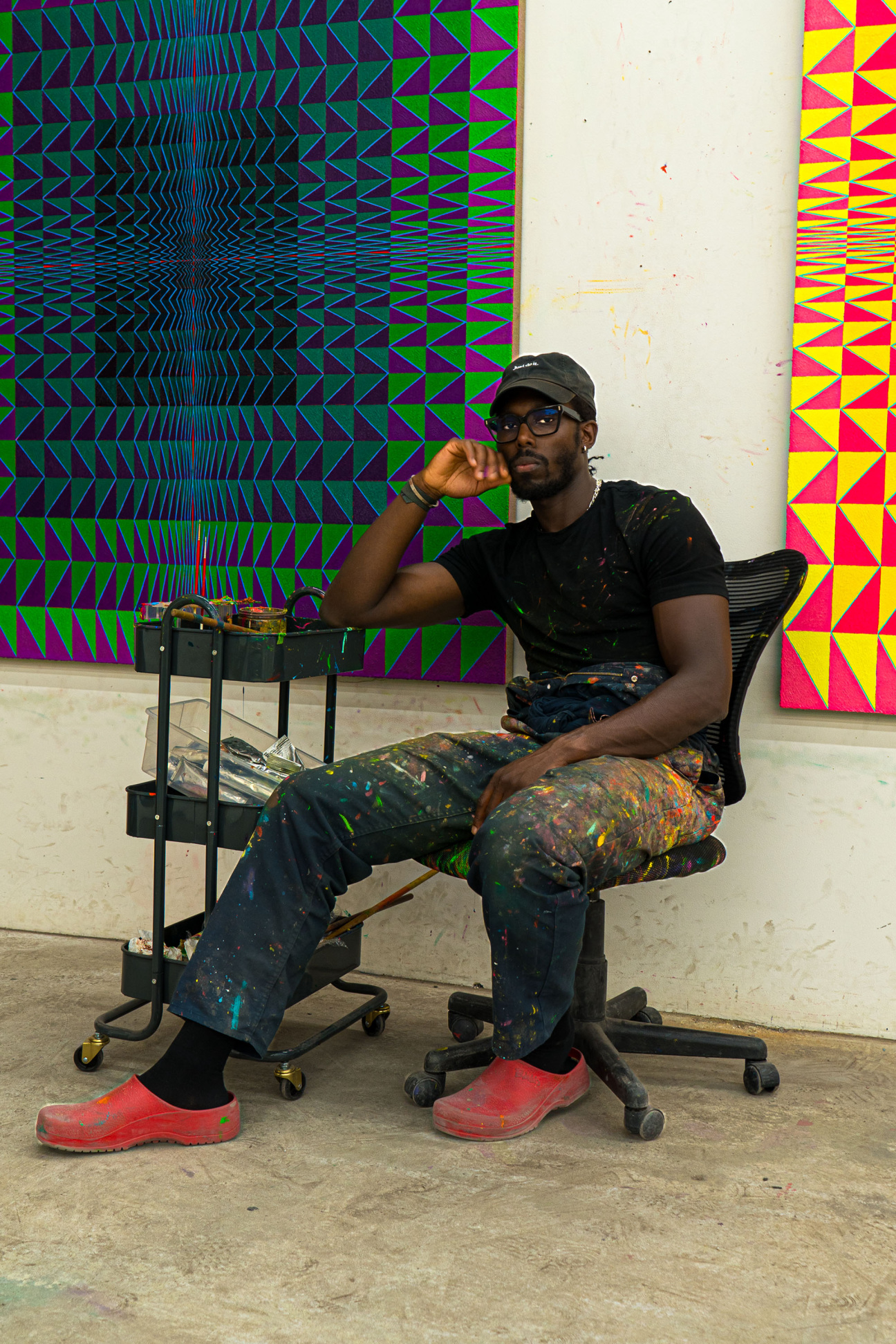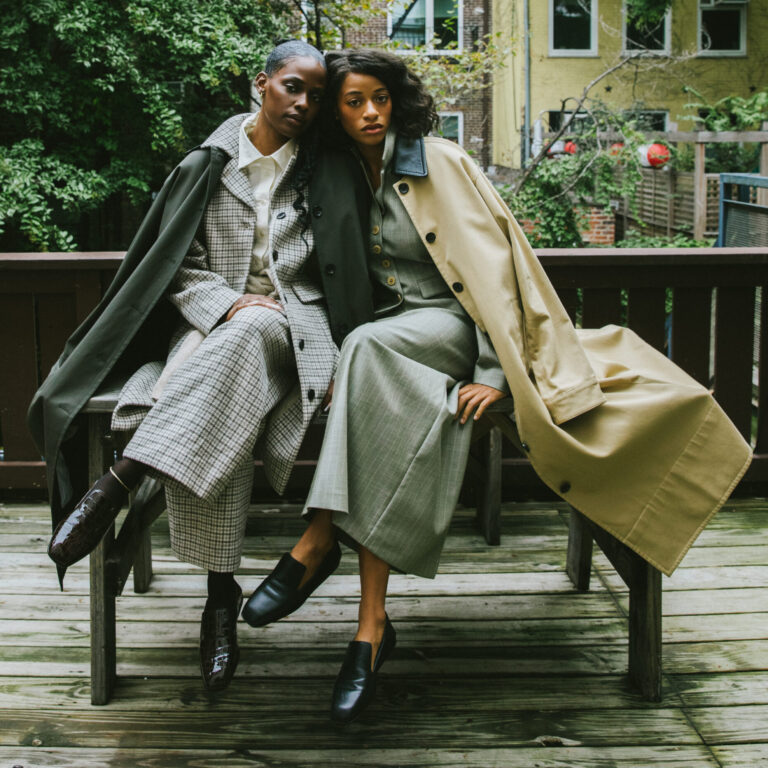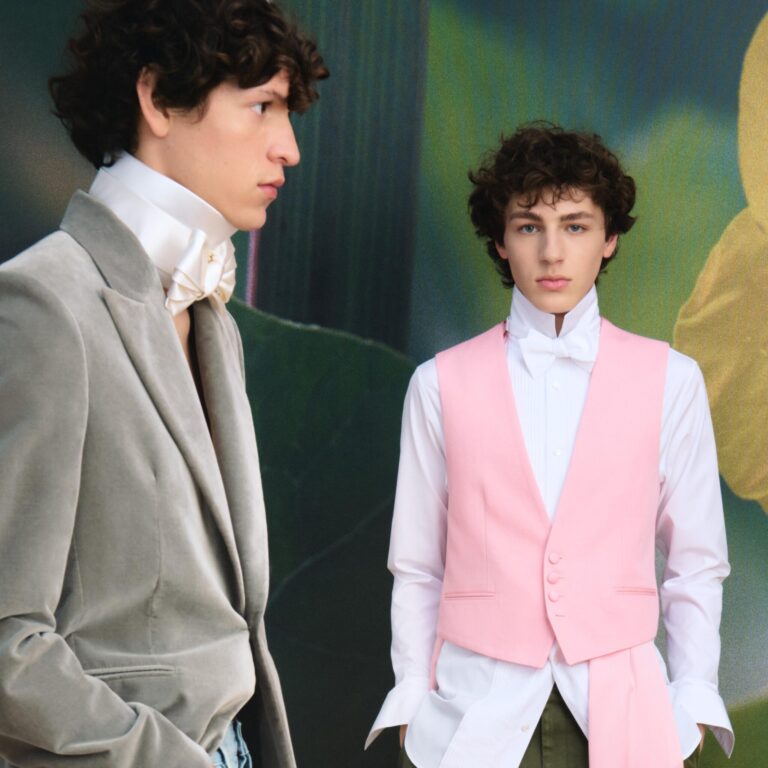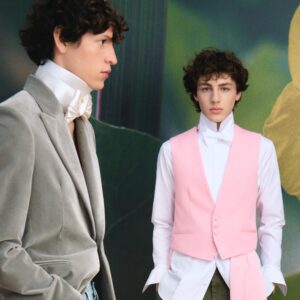
AGE: 34
BASED: Los Angeles
There’s a pervading myth that art and math are diametrically opposed. For Brooklin Soumahoro, though, expression and order are happily in sync. “I have a very mathematical brain,” the Los Angeles–based painter tells me, calling from his native Paris. “Lines, grids, color, composition, textured surfaces—that’s always been my thing.”
That predilection is evident in each step of Soumahoro’s process. Before beginning a painting, he produces countless graphs of chromatic relationships, preliminary pattern documentation, and writings on color theory, recording each formal detail of a given work in a large binder. “When I start a painting, I know exactly when it’s going to be finished,” Soumahoro explains. “I like to come to the studio prepared and leave knowing what tomorrow’s job will be.”
In the studio, the artist listens to music with sonic frequencies that match his color patterns; when a song works, regardless of genre, he’ll listen to it on repeat for weeks. (In 2023, he was among the top one percent of Spotify’s U.S. listeners.) That same year also saw him make standout appearances in group shows across Europe—garnering the attention of François Ghebaly, who gave him a solo in Los Angeles this fall.
It’s no surprise that Soumahoro’s profile is rising across the globe. Having lived everywhere from Philadelphia to São Paulo, the self-taught artist is a polyglot for whom the canvas is a means to “digest” a world of influences. But it’s the particular romance of the South of France that’s consistently captured his soul. “The Open Window,” Soumahoro’s François Ghebaly show, drew inspiration from Henri Matisse’s painting of the same name, which depicts a sunny Riviera scene. Soumahoro’s color palette—fluorescent greens, sunset pinks, apricots—reflects that of the French master’s 1905 work, but the triangular prisms that populate his canvases more closely echo the lesser-known, moody proto-Rothko that Matisse completed nine years later, after the war, Porte-fenêtre à Collioure. According to Soumahoro, it’s a prime example of the emotive power of minimalism: “No bullshit, straight to the core. They say everywhere leads to Rome, but what’s the easiest path?










 in your life?
in your life?

